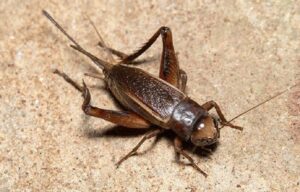Many people in Portland think that they do not have to worry about pests in the winter. Cold air, frosty nights, and wet conditions give the impression that these unwanted guests vanish until spring. Yet this assumption creates a false sense of security for homeowners. Believing the wrong things about winter pests can leave your home vulnerable to infestations. Awareness of the common winter pest myths lets you take action against pests during the coldest months of the year or before winter arrives. This is possible with the help of Pointe Pest Control experts.
The company offers tailored solutions to keep your property safe no matter the season. They also offer thorough inspections to catch hidden infestations and preventative plans. Pointe uses expertise with local knowledge to address the unique pest pressures of the Northwest. They advise homeowners not to believe the following myths:
Cold Weather Kills All Pests
Some pests slow down in winter, but many species adapt to survive. Ants dig deep into the soil to escape the cold, while spiders find cozy corners indoors. Also, rodents move inside to take advantage of warmth and food. Pests become more determined to enter homes during winter.
Pests Don’t Exist If You Don’t See Them
Winter pests are often less visible, which leads people to assume they are gone. In reality, pests change their activity indoors and hide in walls, basements, and attics. Mice can nest in insulation, while cockroaches can cluster in warm areas near appliances. Silverfish can stay hidden in storage boxes.
Your Clean House Can’t Attract Pests
Cleanliness helps reduce pest problems, but it doesn’t make your home immune. Winter pests seek warmth and shelter. Even the cleanest homes have entry points around windows, doors, or rooflines. Once inside, pests can feed on crumbs, pet food, or stored pantry items.
Pests Don’t Breed in Winter
Many homeowners think cold weather stops pest reproduction. Some insects pause, but rodents and cockroaches continue to reproduce indoors as long as they have shelter and food. A pair of mice can lead to dozens of offspring in a few months. An ignored nest in winter could grow into a large infestation in spring.
Sealing Your Home Once Is Enough
Caulking cracks and weatherproofing doors is an important step, but pests are persistent. As the weather changes, wood expands and contracts, creating new gaps. Rodents can chew through caulk, and insects can squeeze their bodies into tiny spaces. Believing one round of sealing offers permanent protection leaves your home vulnerable year after year.
You Don’t Need Pest Control in Winter
Many people skip pest control in the colder months due to lower pest activity. But winter is a key season for pests to establish themselves indoors. Skipping professional inspections or treatments gives them months to build nests and grow populations. Continuous protection through every season is essential to avoid infestations that can become harder to manage later.
Storing Firewood Indoors Is Harmless
Bringing in a pile of firewood may be convenient on chilly days, but this habit can invite pests inside. Termites, ants, spiders, and beetles often nest in stacked wood. When stored indoors, the warmth wakes them. Then, they wander through the house. Firewood should always be stored outside, away from exterior walls. It should only be carried in when ready to use.
Pests Won’t Damage During Winter
Some homeowners assume pests go dormant in winter and won’t cause much harm. Yet rodents chew on electrical wires year-round. Termites don’t stop eating wood just because it’s cold outside. Even insects that move more slowly indoors can still contaminate food and trigger allergies.
DIY Sprays Work Well in Winter
Sprays may kill a few visible insects, but they don’t address hidden nests or stop entry points. Rodents, cockroaches, and ants often remain unaffected because their main colonies are out of reach. Relying solely on DIY treatments gives pests time to spread.



